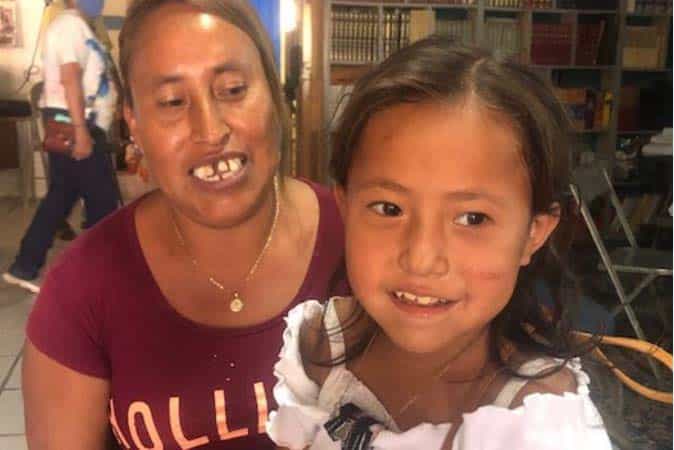By Patricia Moran, June 2022
For centuries the Coca people, one of Mexico’s oldest tribes, have lived in villages on the NE shore of Lake Chapala in the state of Jalisco, Mexico. Currently there are five villages, all in close proximity to each other, along a narrow strip of land between the lake and the looming Sierra Madre mountains: Mezcala, San Pedro Itzican, Agua Caliente, Chalpicote, and La Zapatera. The villages vary in population from about 300 people to over 5000. These villages bear all of the characteristics of extreme poverty. Almost all of the cooking is done on wood stoves. The only medical care in the villages is a young woman trained in first aid. There is no ambulance service. Bathrooms are holes in the ground. Births and deaths are sometimes not officially recorded. There is no regular garbage pick up. One in four homes has a dirt floor. The majority of adults are either illiterate or have only a primary school education.
While such extreme poverty exists in other parts of rural Mexico, these villages have a devastating distinction: they have one of the highest rates of Chronic Kidney Disease of non-traditional causes (CKDnt) in the world. Even as the prevalence of this disease rises exponentially in many parts of the world, this small strip of land in Jalisco Mexico is at the top of the list. Every single family has been affected directly or indirectly. On average, two young people die of the disease every month. Most who die are in their 20s and 30s and some are even younger. By all accounts, the reported numbers are lower than the reality; there are children who succumb without ever seeing a doctor.
Some studies have been conducted looking at possible causes for the prevalence of the disease in the area but none have produced conclusive results and these efforts have left an unfortunate sense of distrust among the villagers. Through the eyes of the villagers, researchers come to the villages, probe for information in various ways, and then leave without improving the situation or even remaining in touch with the villages.
According to village elders, a generation ago the incidence of kidney disease was low and virtually non-existent among young people. This, of course, is an indication that something in the environment shifted. It remains a puzzle to ponder and investigate although there are some clues.
The Lerma River winds through highly industrialized areas and empties into Lake Chapala close to the villages. Despite government claims of treatment plants along the river, the Lerma River remains lifeless and highly polluted. Whether or not the level of pollution in the river corresponds to the increase in kidney disease is difficult to assess since the river has been highly polluted for many decades.
Traditionally, villagers relied on fishing for sustenance and livelihood. In the 1980s a drastic reduction of fish in the lake forced most to seek employment away from the villages in factories, domestic work and farm work such as berry picking. Perhaps the pollutants that villagers are exposed to in their work have contributed to the rise in the rate of kidney disease. Another consequence of the lack of work in the villages is that many children are left mostly unsupervised during the week while their parents are away at work, returning only on the weekends. The rate of childhood malnutrition is estimated to be at least 70% and chronic malnutrition is a risk factor for the disease. Not only does malnutrition weaken kidneys, it also creates vulnerability to other diseases which negatively affect kidneys and other organs.
Lack of potable water is another area of concern. Families that can afford bottled water buy it from a local water company. The many who cannot afford bottled water either drink water from the lake or from a well drilled into volcanic rock that contains hot water full of dangerous substances. The water from this well is piped to a treatment plant but is only treated with chlorine, hardly adequate to eliminate harmful substances and is, in fact, dangerous itself to consume. Most families have outdoor toilets consisting of a hole in the ground, resulting in dangerous levels of e-coli in the soil and groundwater. There is a belief among villagers that the water is to blame for the kidney disease and, as a result, chronic dehydration is widespread. This lack of trust in the water also leads villagers to substitute Coca Cola for water. Both chronic dehydration and drinking Coke damage kidneys, especially among young children.
Studies have eliminated obesity and diabetes as reasons for the high prevalence of kidney disease in the villages. In fact, one study found the rate of diabetes and obesity was lower in those villages than in the comparison region.
Currently two programs exist that address the kidney disease problem. FoodBank Lakeside (foodbanklakeside.org) provides money for weekly food despensas to 90 families dealing with kidney disease. This helps to alleviate the terrible challenge these families face having to choose between food and medical care. The other program, also supported by FoodBank Lakeside and administered by another group called Poco a Poco San Pedro Itzican (pocoapocosanpedro.org), provides a prepared meal five days a week to over 700 children. These groups will soon start what they are calling a FoodFarm that will provide villagers with resources and support to grow pesticide-free food in the villages.
While these programs are a start, there remains a great deal to do to both understand why the disease is so prevalent in the area and also how to reduce its devastating effects. Given the tremendous rise of this disease in many parts of the world, these villages may be considered a canary in a coal mine. They deserve attention not only to reduce suffering in the villages themselves but also perhaps to study as a microcosm of changes that are occurring in many places throughout the world that contribute to the disease.

